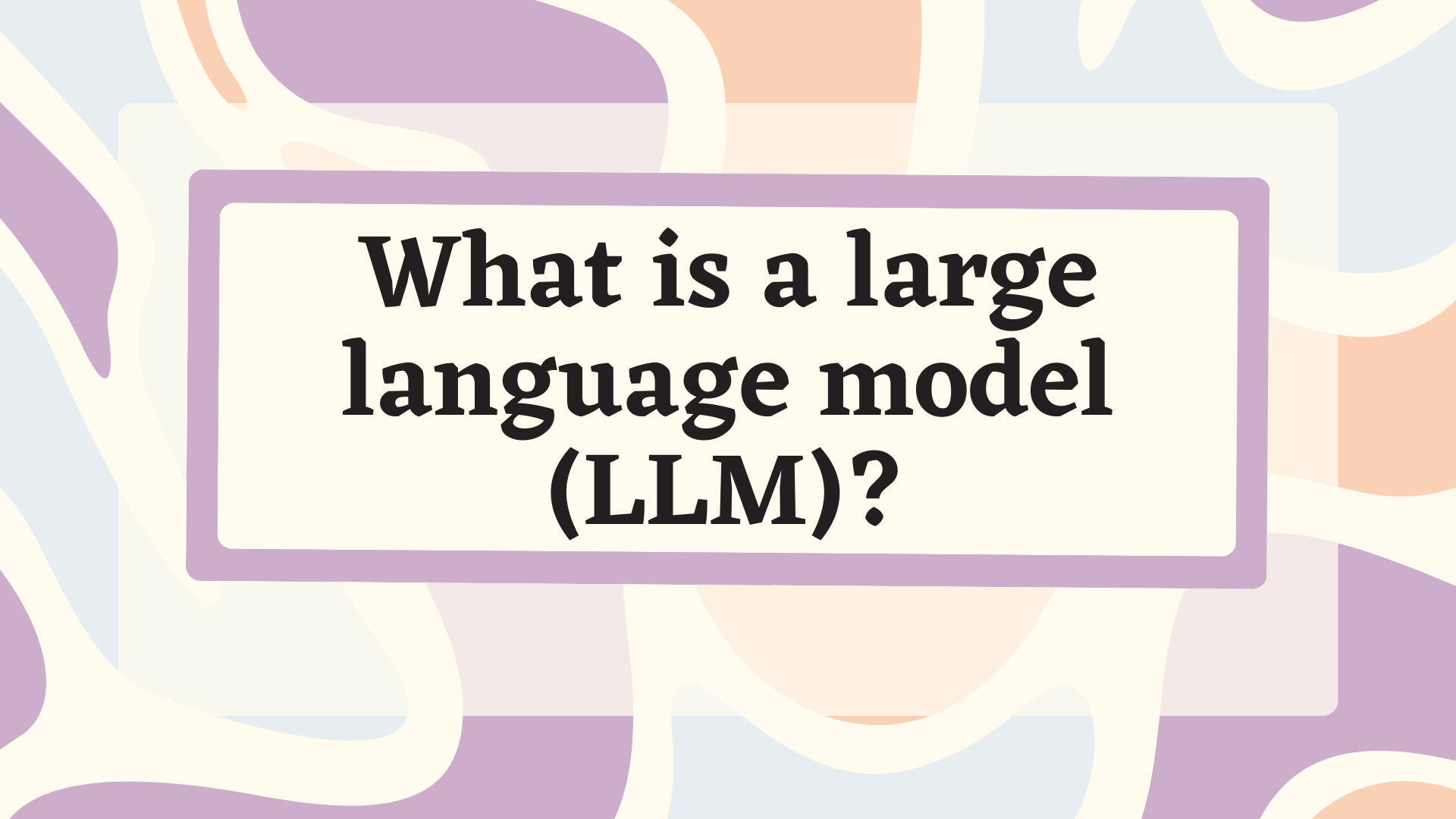What is a large language model (LLM)?
Large language models (LLMs) are like language-savvy wizards in the realm of artificial intelligence. They possess the remarkable ability to understand and produce human-like text by diving deep into vast oceans of linguistic data.

In the world of artificial intelligence (AI), Large Language Models (LLMs) are garnering significant attention and making waves across various industries. But what exactly is an LLM, and why is it so important?
Put simply, an LLM is a type of AI model that has been trained on vast amounts of text data to understand and generate human-like language. These models are built using deep learning techniques, specifically a branch of AI called natural language processing (NLP).
At their core, LLMs are designed to comprehend and produce human language in a way that's eerily similar to how we humans communicate with each other. They can understand context, grammar, and semantics, and even generate coherent responses to prompts or questions.
What are LLMs used for?
LLMs have a wide range of applications across various industries, thanks to their ability to understand and generate natural language. Let's delve into some common use cases and real-world examples, particularly those showcased on the Microsoft website.
Language Translation: LLMs are used to power machine translation services, enabling users to translate text from one language to another accurately. Microsoft's Azure Cognitive Services offers Translation services powered by LLMs, ensuring accurate and fluent translations in real-time.
Chatbots and Virtual Assistants: LLMs form the backbone of chatbots and virtual assistants, allowing them to understand user queries and respond in a human-like manner. These AI-powered assistants can handle customer support inquiries, provide information, and even engage in casual conversations.
Content Generation: LLMs can generate human-like text based on prompts or input provided by users. This capability is utilized in various content generation tasks, including writing articles, generating product descriptions, and even composing poetry or prose.
What are some advantages and limitations of LLMs?
Advantages:
Natural Language Understanding: LLMs excel at understanding natural language, making them ideal for tasks requiring interaction with humans.
Versatility: LLMs can be adapted for various applications, from translation to content generation, providing flexibility across industries.
Continuous Learning: LLMs can be fine-tuned and improved over time with additional data, allowing for ongoing refinement and enhancement of performance.
Limitations:
Data Bias: LLMs may inherit biases present in the training data, leading to potentially biased or unfair outputs.
Computational Resources: Training and deploying LLMs require significant computational resources, making them inaccessible for some organizations.
Ethical Considerations: LLMs raise ethical concerns regarding privacy, misinformation, and potential misuse, necessitating careful consideration and oversight.
How developers can quickly start building their own LLMs
For developers eager to leverage LLMs in their projects, Microsoft Azure offers a suite of tools and services to kickstart the development process. Azure's Cognitive Services provides pre-built LLMs for various NLP tasks, including language understanding, translation, and text generation.
By leveraging Azure's Cognitive Services, developers can quickly integrate LLM capabilities into their applications without the need for extensive AI expertise. Additionally, Azure offers resources and documentation to guide developers through the process of building and deploying LLM-powered solutions, ensuring a smooth development experience.
In conclusion, Large Language Models (LLMs) represent a significant advancement in artificial intelligence, with diverse applications across industries. While they offer numerous advantages in natural language understanding and generation, developers must be mindful of the associated limitations and ethical considerations. By leveraging platforms like Microsoft Azure, developers can harness the power of LLMs to build intelligent, human-like language capabilities into their applications, driving innovation and enhancing user experiences.